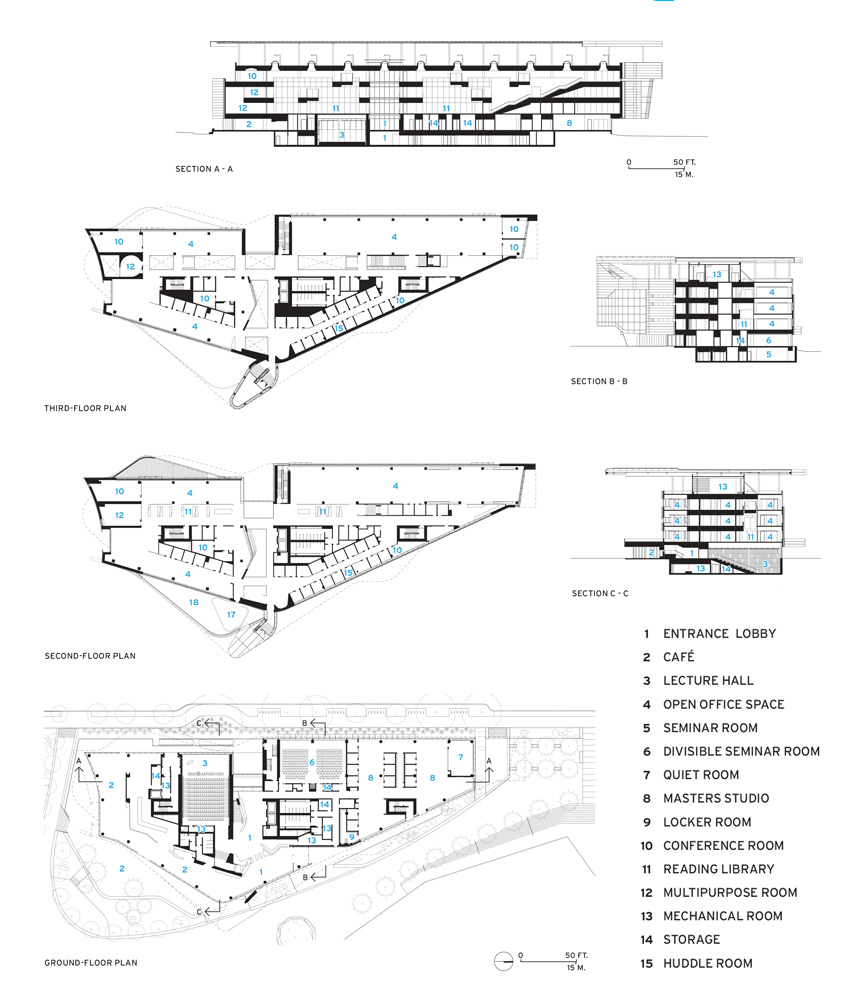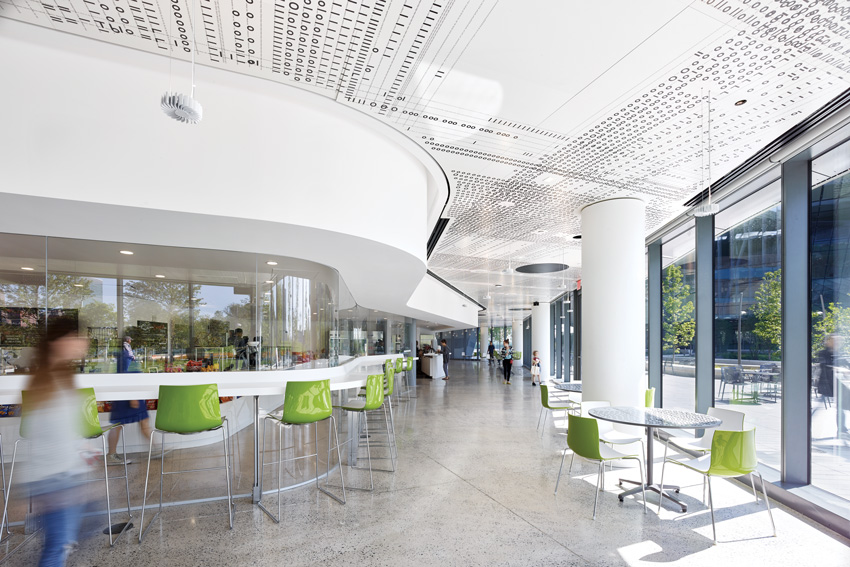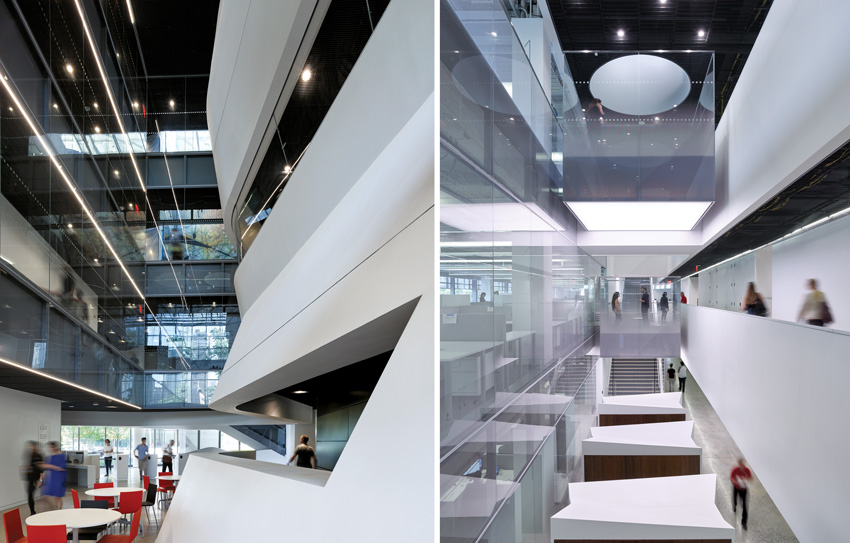Green Campus Design
 1 AIA LU/HSW; 0.1 IACET CEU*; AAA 1 Structured Learning Hour; This course can be self-reported to the AANB, as per their CE Guidelines; AAPEI 1 Structured Learning Hour; This course can be self-reported to the AIBC, as per their CE Guidelines.; MAA 1 Structured Learning Hour; This course can be self-reported to the NLAA.; This course can be self-reported to the NSAA; NWTAA 1 Structured Learning Hour; OAA 1 Learning Hour; SAA 1 Hour of Core Learning
1 AIA LU/HSW; 0.1 IACET CEU*; AAA 1 Structured Learning Hour; This course can be self-reported to the AANB, as per their CE Guidelines; AAPEI 1 Structured Learning Hour; This course can be self-reported to the AIBC, as per their CE Guidelines.; MAA 1 Structured Learning Hour; This course can be self-reported to the NLAA.; This course can be self-reported to the NSAA; NWTAA 1 Structured Learning Hour; OAA 1 Learning Hour; SAA 1 Hour of Core Learning
Learning Objectives:
- Discuss how the strategies for energy and water conservation and resilience are deployed at the new Cornell Tech campus.
- Define the term “net zero energy.”
- Explain the principles of Passive House and outline its certification requirements.
- Describe some of the design and construction challenges faced by the team behind The House residential tower, slated to be the largest Passive House building in the world.
This course is part of the Resiliency Academy
View course on architecturalrecord.com »
Bloomberg Center
Cornell Tech
Morphosis Architects
By Suzanne Stephanes
The first academic building at Cornell Tech, the Emma and Georgina Bloomberg Center, is a gleaming, bold statement on the new island campus for Cornell Tech, a partnership of Cornell University and Technion-Israel Institute of Technology. Its muscular, athletic stance, where a solar roof of 1,464 photovoltaic (PV) panels is boosted above four stories of teaching spaces, exultantly declares we have arrived about this adventurous step in bringing digital education and entrepreneurship together. Yet Thom Mayne, the design director and founder of Morphosis Architects, a Los Angeles– and New York–based firm, brushes off the implication that an arresting expression was intentional for this graduate computer-science and engineering facility. “I don’t design icons,” he says without irony—even though academic buildings by Morphosis such as Gates Hall at Cornell’s Ithaca, New York, campus (RECORD, November 2014, page 100), or Emerson College in L.A. (RECORD, May 2014 page 100) do stand out forcefully from the crowd.

PHOTOGRAPHY: © MATTHEW CARBONE
FULL METAL JACKET
The lily pad–shaped solar canopy, carrying photovoltaic panels, juts like a visor over the southern end of the Bloomberg Center (right). Morphosis has designed an aluminum rainscreen wall system (left), which maximizes insulation values and minimizes thermal bridging for the building. The hope is to achieve net zero status.
Mayne invokes sustainability—particularly the Bloomberg’s lily pad canopy of PVs—as the foremost generator of his scheme. It is only the tip of the hat to an array of green features such as geothermal wells, and a rainwater-collection system for the all-electricity (no combustion) building. The overall desire is to attain net zero energy, with the building producing, over the course of a year, at least as much energy from renewable sources as it consumes. Morphosis originally envisioned a roof of PVs that would float across the pedestrian plaza and central circulation spine to The Bridge building by Weiss/Manfredi on the eastern side of the site (page 134) to provide enough energy to meet the goal. Ultimately the idea was scaled back so that each structure has its own solar canopy: the Bloomberg Center’s is 40,000 square feet. Taken with The Bridge’s, the two arrays create the equivalent of a 900-kilowatt system. Whether the center proves to be “zero” or only “lite” will be answered by future monitoring.

To cut energy consumption, however, Morphosis clad the Bloomberg Center in a rainscreen wall system that maximizes insulation values and minimizes thermal bridging. In addition, the outermost layer is punched with 2-inch circular tabs and coated in an iridescent polymer film. “We wanted a dynamic facade,” says Ung-Joo Scott Lee, Morphosis principal. To get the full optical effect, the architects worked with Zahner, the architectural-metal fabricator, and received digital input from Cornell and MIT students.

PHOTOGRAPHY: © MATTHEW CARBONE
WELCOME TO OUR WORLD
The café at the entrance to the Center is open to the general public. Highlighting the swerving counter and soffit is an expansive artwork by Michael Riedel. Titled Cornell Tech Mag, the piece is a black-and-white inkjet print on acoustical ceiling panels and is also silkscreened on the café’s tabletops.
The iridescent, sparkling exterior skin is cut away so that bands of glazing do admit light to an array of educational spaces but maintain the recommended 60:40 ratio of wall surface to glass. Open classrooms are located on the western side of the building, facing Manhattan, and 76 small “huddle” rooms, where three or four people can meet, are on the east, oriented toward Queens. The huddle rooms evolved out of the desire by Daniel Huttenlocher, Cornell Tech dean and vice provost, to encourage an improvisatory exchange of ideas among the students and faculty. Whether these remain unassigned spaces or are appropriated by faculty members is unclear.
To ensure a fluidity of space that might spark spontaneous interaction, Morphosis placed a four-story atrium (five-story along the west) at the center of the building, anchored by an expansive stairway. At the second level, ancillary stairs take over the circulation. One veers into a curved appendage that protrudes outside the main volume of the building; its steel structure helps prop up the solar-canopy roof, which other¬wise depends on the extension of the Center’s steel columnar grid for support.

PHOTOGRAPHY: © MATTHEW CARBONE
INTO THE VOID
A long, three-story-high galleria (right) extends along the western portion of the Center. Here glass boxes on the third and fourth levels seem to float in the space, overlooking the locker pavilions adjoining reading tables below. At the entrance, a four-story part of the atrium (left) is given drama by the curving balustrades and bowed walls.
The atrium’s curvilinear walls, plus a stair’s glass enclosure, along with artist Matthew Ritchie’s resin, glass, and ink, 80-foot-high mural create an active core for the Center. In addition, a long galleria cut north–south through three stories of the western portion of the building offers another opportunity for casual encounter. Here five glass boxes for collaboration appear to float high in the void. (They are actually cantilevered from the steel frame.) Although the interior is more crepuscular than The Bridge across the plaza, skylights introduce illumination, while the white solid surfaces of the lockers on the second floor and polished concrete floors help bounce light.
The café, at the main entrance facing the plaza and Tech Walk, is open to the public. Its swooping, white, serpentine counter and the lowered ceiling soffit are handsomely offset by an inkjet artwork by Michael Riedel printed on the acoustical panels of the ceiling and silkscreened on the café tabletops. Adding an unusual note, a series of “discovery rooms” contain art installations by Alison Elizabeth Taylor and Matthew Day Jackson. But the most surprising one has a striking 50-foot-long mural by Ilya Bolotowski from 1941 that was painted for the WPA program and salvaged from the Goldwater Memorial Hospital formerly on the site. (Another mural from Goldwater by Albert Swinden has found a home in The Bridge.)
If art seems unusual for a high-tech school, so are the grassy terraces, the variegated plantings, and the contoured lawns by James Corner Field Operations. They unite the exterior spaces around the Center with its neighbors, creating numerous places for socializing in good weather. With its glinting skin that turns different colors in the sunlight, the Bloomberg Center is a strong and welcome presence for the approximately 300 master’s and Ph.D. students and 30 faculty members now using it. In deference to the architect, let’s not call it an icon. But it helps that a by-product of functional and environmental concerns is a magnetic work of architecture.
Credits
Architect: Morphosis Architects — Thom Mayne, design director; Ung-Joo Scott Lee, principal; Edmund Ming-Yip Kwong, Jerry Figurski, Debbie Chen, Stuart Franks, Farah Harake, Cory Brugger, team
Engineer: Arup (structural, m/e/p)
Consultants: Arup (facade, lighting, acoustic, fire, audiovisual, BMS controls, sustainability); Mueser Rutledge Consulting (geotechnical); Pentagram (graphic)
Client and Owner: Cornell University
Size: 160,000 square feet
Cost: withheld
Completion date: July 2017
Sources
Structural Steel: Beauce Atlas
PV Steel support: Koenig
Metal cladding: Zahner
Miscellaneous metal: Crystal Metal Works
Unitized facade/rainscreen: Island Exterior Fabricators
Exterior Glazing: W&W Glass
Curtain Wall/Metal Windows: YKK
Flat and Curved IGU: Cristacurva
Built-up Roofing: Sarnafil/Sikesland
Tile: Sarnatherm Heavyguard
Interior Glazing: Infinite Glass and Metal
Skylights: LineEl
Dome Skylights: Wasco
Acoustical Ceilings: Lindner, Baswaphon, Armstrong
Paints and Stains: Benjamin Moore, Idea Paint
Solid Surfacing: Dupont Corian
Special Finishes: 3Form Varia Eco Resin Wall Paneling
Interior Shades: Mechoshade
Gypsum Prefabricated Products: Plasterform
Office Furniture: Teknion, Herman Miller, Vitra, Wilkhahn, Andreu World, Allermuir
Interior Ambient Lighting: Lucifer Lighting, HE Williams, Linear Lighting
Photovoltaic Panels: Solaria
Photovoltaic System: Entresolar











